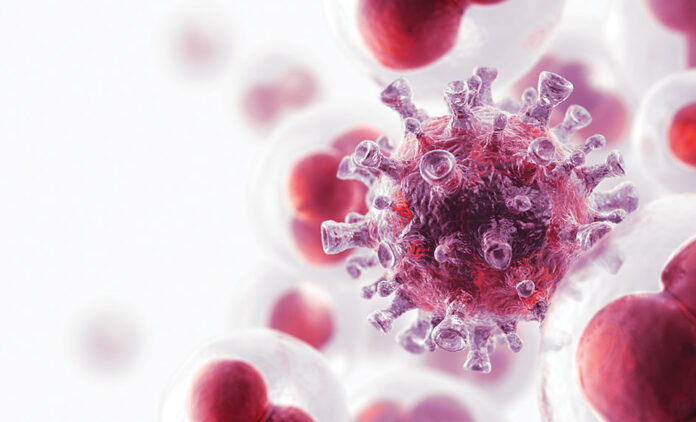
A new standard for graft-versus-host disease (GVHD) prevention after hematopoietic stem cell transplantation (HSCT) may have been set, according to results from a phase III study published recently in the New England Journal of Medicine. The new regimen led to almost 53% survival compared to about 35% on the current treatment used.
The new regimen includes cyclophosphamide, tacrolimus, and mycophenolate mofetil. This combination was more effective at preventing GVHD and had fewer side effects, compared with the current gold standard, which is a calcineurin inhibitor plus methotrexate.
“The new standard allows transplants to be less toxic,” says lead study author Javier Bolaños-Meade, M.D., professor of oncology at the Johns Hopkins Kimmel Cancer Center.
HSCT is used in a number of cancers, including multiple myeloma, lymphoma, and acute myeloid leukemia. The key to making an appropriate stem cell transplant match is human leukocyte antigen (HLA) compatibility — the closer the match the better.
But GVHD can occur when the donor’s immune system reacts against the recipient’s tissue. And, in contrast to an organ transplant, where the patient’s immune system will attempt to reject a transplanted organ, in a stem cell transplant the immune system can attack all organs.
It has been a long journey to prove cyclophosphamide’s value to prevent GVHD in transplants. Said Bolaños-Meade, “Since the late 1990s, early 2000s, we at Hopkins have been studying the role of a high-dose, post-transplantation, cyclophosphamide-based platform.”
By 2008, he tells Inside Precision Medicine, “We knew this approach worked well in patients that did not have a matched donor. We were also expanding this approach into matched donors.”
In 2019, Bolaños-Meade and a team published a pivotal study comparing three regimens, including cyclophosphamide, tacrolimus, plus mycophenolate mofetil. “This study showed that post transplantation, cyclophosphamide was likely to be superior to the standard,” he added.
The current gold standard to prevent GVHD is a combination of a calcineurin inhibitor, such as tacrolimus or cyclosporine, and methotrexate.
In the current phase III study reported in NEJM, researchers from multiple institutions tested this standard against the combination of cyclophosphamide, tacrolimus, and mycophenolate mofetil. A total of 431 patients were enrolled from 37 centers across the United States. Patients were HLA matched to donors if related, and if unrelated, they were to be matched but could have one antigen mismatch.
At the study’s endpoint, “More than half patients in the cyclophosphamide platform were alive, free of grade III-IV acute GVHD and chronic GVHD needing immunosuppression, and without disease relapse or progression versus a third in the methotrexate and tacrolimus arm,” says Bolaños-Meade.
“There were also a series of secondary endpoints showing less severe acute GVHD, and less chronic GVHD. Very importantly this was seen without an increase on relapses as historically — the better control of GVHD, the more cancer relapses. In this case we have better control of GVHD, but no more relapses,” he added.
The researchers say that for the first time since the 1980s, we have a more effective drug therapy to prevent severe cases of GVHD, and therefore, we have a new standard of care. “This is important because methotrexate and tacrolimus is toxic enough. Now our transplants can be performed even in older individuals. In fact, the median age in the study was 66 years,” says Bolaños-Meade.
This regimen, he tells Inside Precision Medicine, is already widely adopted since the 2019 paper. After that, “Many groups started adopting this for their matched transplantation. I do not expect serious delays in adoption as transplanters are quite familiar with the platform.”













